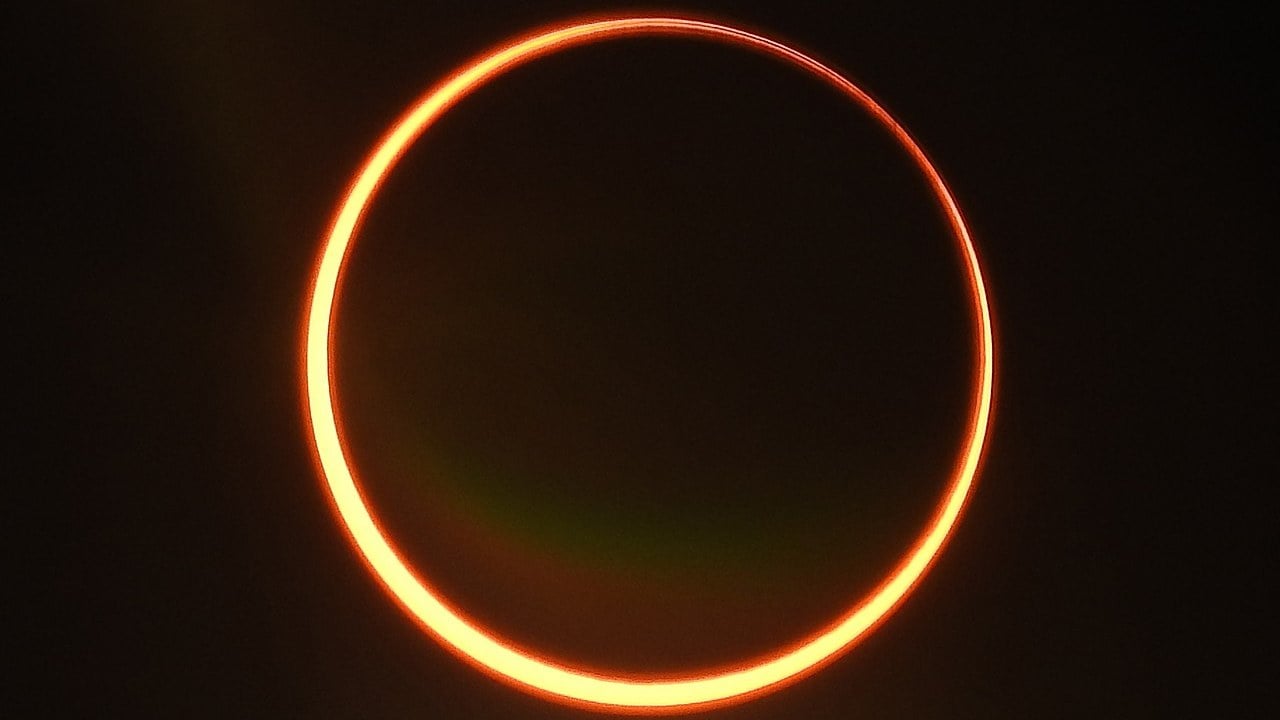FP TrendingJun 21, 2020 10:24:09 IST
The Earth will bear witness to an annular solar eclipse on Sunday, 21 June and the people in India will be able to catch this annual celestial event in action.
A solar eclipse occurs when the moon passes between the sun and the earth. When this happens, the moon blocks the light of the sun from reaching the earth. The shadow of the moon is then cast on the earth.
There are three types of solar eclipses:
First, there is a total solar eclipse — which is only visible from a small area on earth. For the phenomenon to occur, the sun, moon and earth must be in a direct line.
Second is the partial solar eclipse when the sun, moon and earth are not exactly lined up.

The annular solar eclipse of 26 December 2019, as seen from Jaffna, Sri Lanka.
The solar eclipse of 21 June, however, is an annular eclipse and is the third type. This happens when the moon is farthest from the earth, according to NASA blog. Since the moon is farther away from the earth, it seems smaller and does not block the entire view of the sun. The moon is in front of the sun and looks like a dark disk on top of an even larger disk which appears like a ring of fire.
Solar Eclipse 2020 time and date
The eclipse will be annular in some parts of the country, where sky gazers will get an opportunity to observe the “ring of fire” during the phenomenon, an official said on Monday. However, for most parts of the country, the eclipse will be partial.
The path of the annular solar eclipse will start near Gharsana in Rajasthan around 10:12 am IST and the phase of annularity will begin around 11:49 am IST and end at 11:50 am IST, Director of the MP Birla Planetarium Debi Prasad Duari told PTI.
The ring of fire will be visible for that one minute from places such as Suratgarh and Anupgarh in Rajasthan, Sirsa, Ratia and Kurukshetra in Haryana, and Dehradun, Chamba, Chamoli and Joshimath in Uttarakhand. According to the Nehru Planetarium, the solar eclipse will first be visible in Bhuj, Gujarat starting at 9:58 am IST and will be seen ending last in Dibrugarh, Assam at 2:29 pm IST.
In Kolkata, the partial eclipse will begin at 10.46 am IST and end at 2.17 pm IST, while the timing will be from 10.20 am IST to 1.48 pm IST in New Delhi, from 10.00 am IST to 1:27 pm IST in Mumbai, from 10.22 am IST to 1.41 pm IST in Chennai and between 10.13 am IST and 1.31 pm IST in Bengaluru.
On June 21, the annular eclipse will first start for the people of Congo in Africa and progress through South Sudan, Ethiopia, Yemen, Oman, Saudi Arabia, the Indian Ocean and Pakistan, before entering India over Rajasthan. It will then move on to Tibet, China, Taiwan, before ending at the middle of the Pacific Ocean.
This will be the last eclipse to be seen from India for the next 28 months as the next eclipse will be seen in India on October 25, 2022.
How to watch the solar eclipse online
For people living in parts of the country where the eclipse is visible, you can go outside and watch the annual solar eclipse. However, it is important to maintain social distance due to the COVID-19 pandemic and have proper eye protection because looking directly at the Sun can cause permanent damage to the eye’s retina. If you aren’t in the areas where the eclipse is visible or you don’t want to go out, you can watch the phenomenon online. TimeandDate and Slooh will be streaming the eclipse live on their YouTube and you can also follow the path of the eclipse using the NASA tracker.
[embedded content]
[embedded content]
With inputs from agencies
Find latest and upcoming tech gadgets online on Tech2 Gadgets. Get technology news, gadgets reviews & ratings. Popular gadgets including laptop, tablet and mobile specifications, features, prices, comparison.
Post a Comment